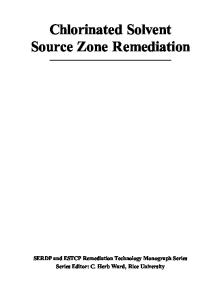Formation of chlorinated carbon products during carbochlorination reactions
- PDF / 305,154 Bytes
- 3 Pages / 614.28 x 794.28 pts Page_size
- 38 Downloads / 371 Views
9 10 11 12
Bed Material clay-NaC1 (CO) clay-metallurgical coke-NaC1 clay-pyrolyzed petroleum-NaC1 clay-graphite-NaC1 blank #1 zircon sand-petroleum coke titania slag-petroleum coke blank #2
graphite diamond glassy carbon graphite-alumina
Solids Ratio 10/1 10/2/1 10/2/1 10/2/1 -2/1 2/1 --
*The crystallographic forms of the diamonds made by Teledyne Wah Chang Albany, Alban3,, OR, the glassy (amorphous) carbon, and the graphlte were verified by X-ray dlffracnon
In this apparatus the condensing area was a small, icecooled glass tube designed to facilitate collection of the chlorination products. The procedure for these experiments was essentially the same as described above except that the solids were not pelletized. Table I presents the pertinent conditions for the 12 experiments. The concentrated hexane solution samples were evaporated to less than 1 ml, a mixture of internal standards
Experimental Conditions Bed Wt, g 200 200 200 200 -200 200 --
---10/1
ARNE LANDSBERG, Chemtcal Engineer, and R D. WILSON, Chemist, are with Albany Research Center, Bureau of Mines, United States Department of the Interior, Albany, OR 97321. W E BURNS is Senior Scientist, Northrop Servtces, Inc., Corvalhs Environmental Research Laboratory, 200 SW 35th Street, Corvallis, OR 97330. Manuscript submitted June 25, 1985. METALLURGICAL TRANSACTIONS B
Pellet beds were baked out at 700 ~ under flowing highpurity nitrogen prior to chlorination. During bed bake-out the condensing system was not attached to the reactor. The reaction was carried out by adjusting the reactor temperature and introducing chlorine (commercial grade) along with the nitrogen at 1 1/min each. For Test 1, carbon monoxide was substituted for the nitrogen during the reaction time. After the allotted reaction time, the glassware was cooled under a flow of nitrogen; it was then disassembled, and the chloride product condensers were rinsed with distilled water and with hexane to extract the organic compounds. The water and hexane rinses were combined and partitioned in a 500 ml separatory funnel. The aqueous fraction was extracted three times with 50 ml portions of hexane. The total volume of hexane was dried with anhydrous sodium sulfate and evaporated to 1 ml in high-purity nitrogen at room temperature. Blank tests were made without a bed of material in place. The second group of four tests was made to investigate the effect of carbon types that would not be used as commercial reductants but could indicate the effect of carbon type on the chlorinated products. These tests were carried out in a much smaller quartz and glass apparatus because of the limited quantities of glassy carbon and diamonds* available.
1.1 3.2 0.8 1.7
Temperature, ~ 600 625 625 670 625 1000 1000 625
Time, Hours 1 1 1 1 1 1 1 1
bed heated and then rapidly cooled to 870 ~ at 150~ to 920 ~ at 150~ to 875 ~ at 150~ to 825 ~ at 150~
Bed Lost during Reaction, Pct 37 44 23 24 -83 72 --
0.75 0.09 8.2 5.5
was added, and the total volume of each was brought to 1.0 ml with pesticide-grade hexane. Por
Data Loading...










